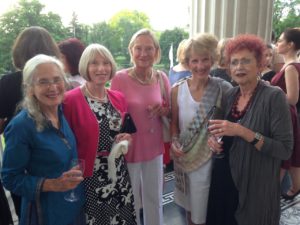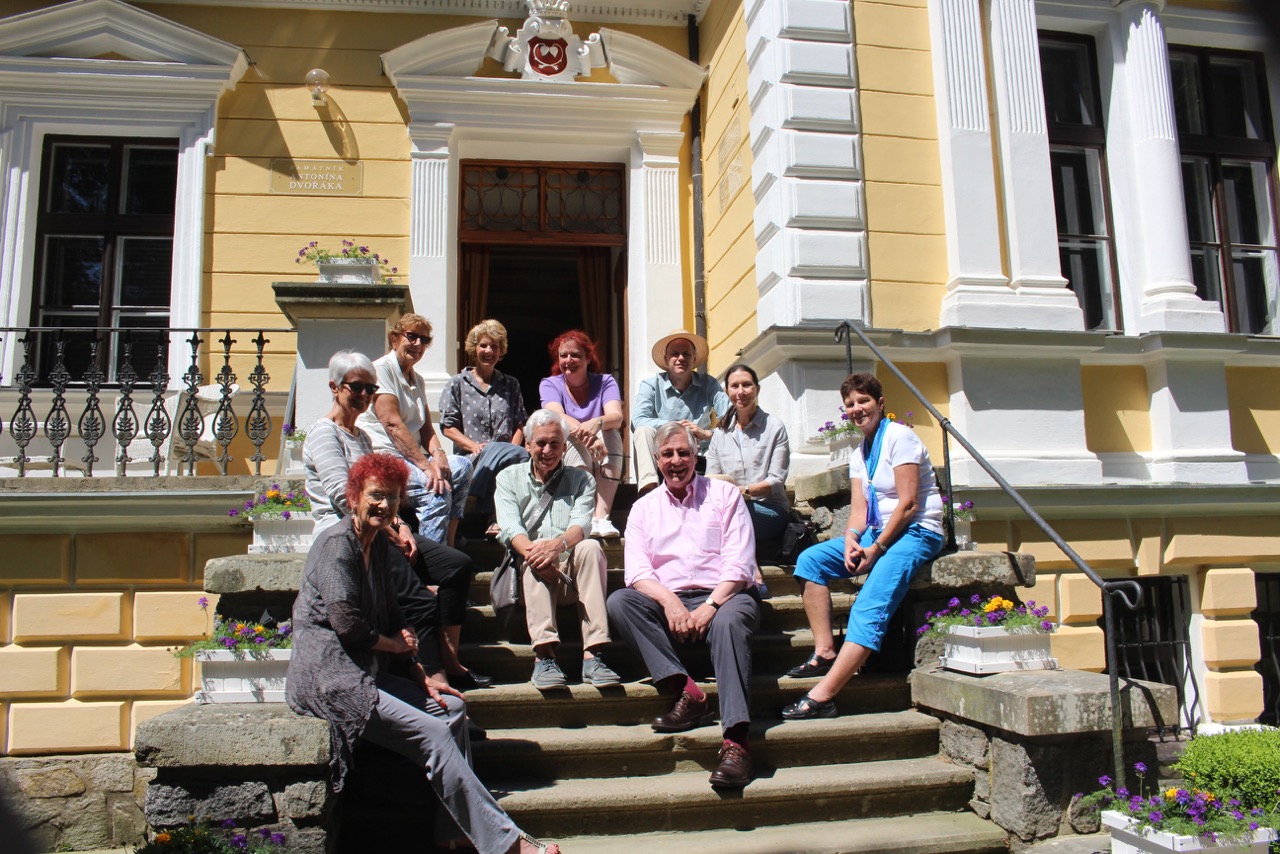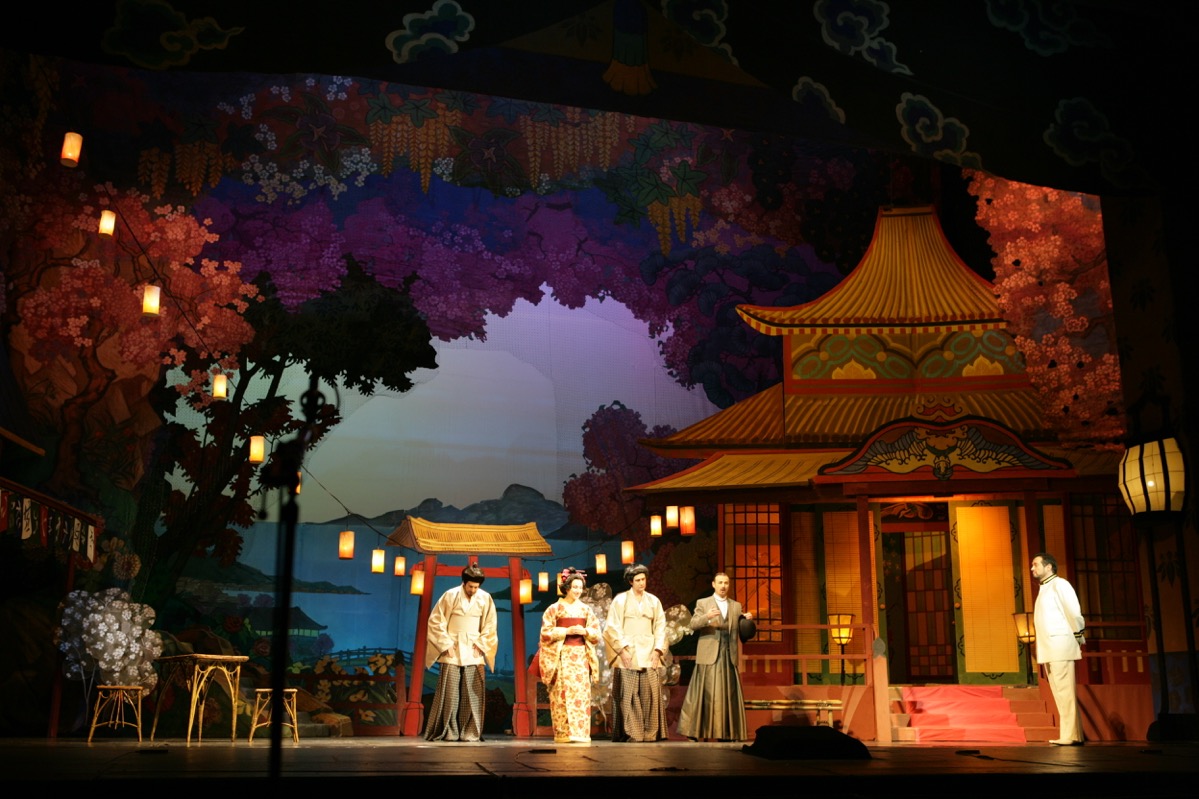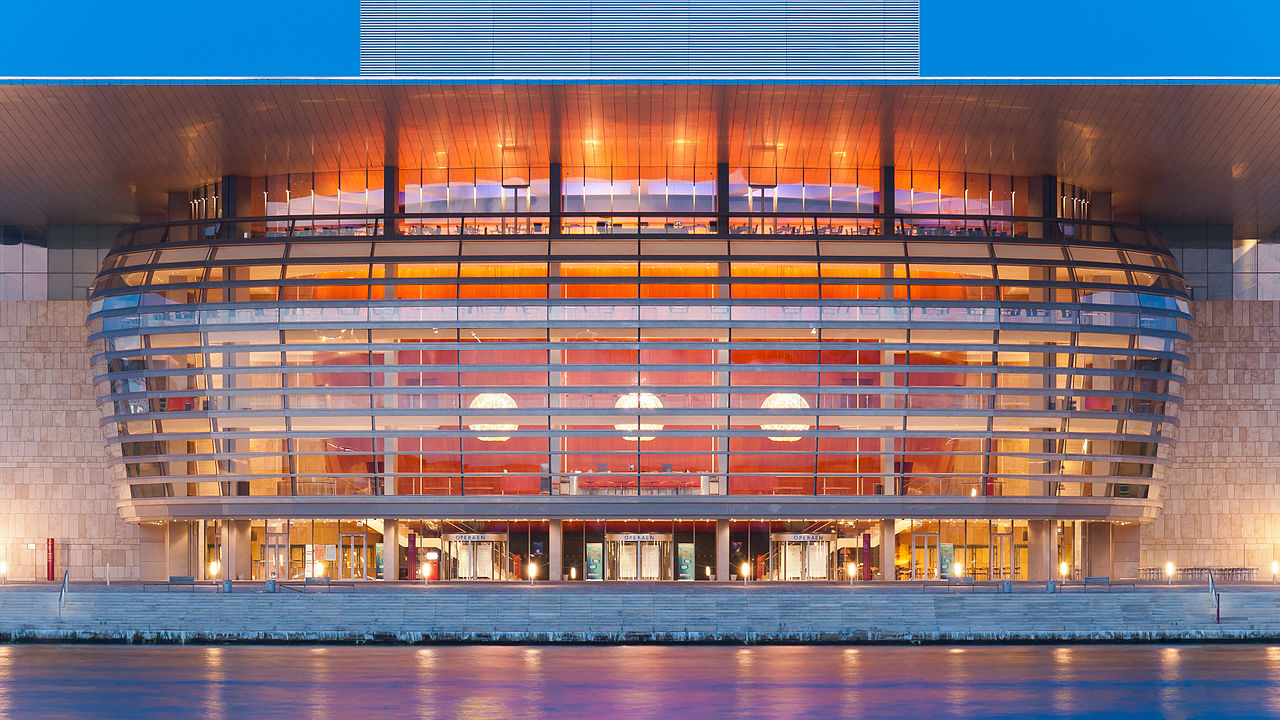What a wonderful sequence of tours we have just returned from. Three in three months! First to the United States, to Chicago and New York, especially nearly two weeks of music and opera in NYC. What a feast. Then a few days later I flew to Vienna to meet a new group for more musical delights in that capital of music, and on to Berlin, Leipzig, and Dresden. Finally in June our own tour in Northern Europe starting in Prague and on to Hamburg, Copenhagen, Riga and Tallinn. All in all we had some 60 people travelling with us for the three tours. It is such a buzz for me meeting and getting to know many music loving people, and of course there were quite few who we already knew, especially on the last tour
Tannhäuser in Tallinn Estonia
In this beautiful city of about 400,000 we have ended the tour with a performance of Wagner’s Tannhauser. Their opera house is not large and is fairly plainly built but it works well and seems to have a good acoustic. The performance was excellent especially the Elisabeth. Our son Adam is principal of the timpani and percussion section and I am not at all biased when I say how outstanding the percussion was!
Adam at Glyndebourne

The original Madama Butterfly in Riga
Tonight we attended our second performance at the Opera House in Riga. The city boasts an excellent opera house set in beautiful gardens, so that standing on the spacious balcony overlooking the park having a drink in the interval on a sunny summer evening is an enormous pleasure.
The performance of Manon Lescaut, though, was not such a pleasure. It was generally well sung but suffered from a pretentious production where in the last act where Manon and Des Grieux are supposed to be perishing in the desert, we find ourselves in the waiting room of a psychiatric hospital – maybe it was meant for the director.
On the previous night in the same theatre – we were in the midst of an annual opera festival, this year devoted to Puccini – the fare was on a much higher plane with the original 1923 production of Madam Butterfly. Not only miraculous in having had Puccini’s personal blessing, the beautiful original designs and staging were nothing short of a revelation, putting to shame the fakery of most modern productions. One example: when Kate Pinkerton arrives to take the child, there was none of the politically correct delicacy on her part about taking the child from Butterfly that you see these days. In this original version she took the child with disdain and hauteur as if even being in the presence of the geisha was beneath her.
On our first night in Riga, through the recommendation of our Latvian friend in Sydney Ojars Greste, we visited the amazing ALA Folk Club, a cavernous basement complex where folk groups from all over Europe and beyond perform their hugely varied styles of music. Their level of excellence was matched by many of the extraordinary instruments they played. We consumed gigantic dishes of hearty Latvian food and stayed till the small hours, though our friends Matthew and Leone Lorrimer, both architects, left early, explaining thet the place was a fire hazard, having only one entrance/ exit.
Fantastic new Venues in Copenhagen
With its canals, magnificent historic precincts, not to mention its great museums, Copenhagen is a dream city to visit and wander around. But all this was dwarfed by our fantastic musical experiences. First we attended a concert of the fabulous Vienna Philharmonic on a European tour in the brand new Konserthuset, a technologically advanced hall of the new style (designed by Jean Nouvel who designed Central Park on Broadway in Sydney), where the stage is just a little away from the centre of the hall, and where a huge convex mushroom baffle over the stage bounces the sound back equally to all parts of the hall whereever you sit. The stage is a kind of arena surrounded by the sloping walls of the elevated tiers of audience seats which help to push the sound up to the mushroom. Apparently the cost was huge and the Government ran out of money, as it’s pretty obvious from the cramped and inadequate foyers that have walls clad in painted chip board!
However the acoustics are superb and the concert equally so with a fabulous performance of Nielson’s 4th Symphony to celebrate the 150th anniversary of Denmark’s most famous composer. The most unusual aspect of the program was its conclusion, rather than its beginning, with a performance of Beethoven’s great Leonora Overture No 3. The applause for this was deafening, far more so than the Nielson, centre piece of the program. Good old Beethoven. The next night was a further step up with a visit to arguably the finest and most spectacular opera house in the world.
The story of the Royal Danish Theatre’s new opera house is worth telling briefly. The patriarch of the Danish shipping line Merckx decided some years ago that Copenhagen needed a new Opera House, so approached the government with an offer to commission and fund the building with two provisos, first that a small disused island in the harbour opposite the Amalienborg Palace be the site, and second that permanent funding to a sufficient level be provided by government. This enlightened deal has provided the city with a magnificent new opera house in a superb setting and is a splendid model for private/ public sector support for the arts!
We saw an amazing production of Verdi’s spectacular Sicilian Vespers in a joint production with Covent Garden by the acclaimed Norwegian director Stefan Herheim. It was updated from its 12th century origin to the time of its writng and set in the theatre in Paris where it had its premiere, substituting the original story with the real history of the merciless exploitation of theatre artists by French aristocrats at the time. Both the concept and its realisation were tours de force.
The Elbphilharmonie in Hamburg
Terrific city with marvellous and huge new waterside precinct in old docklands area on the Elbe. Absolutely amazing new concert hall nearing completion on the river bank called the Elbphilharmonie. Looks like a giant ship and features all the most up to date acoustic technology. Saw very strange production of Simon Boccanegra where most of the action takes place through a huge apparent painting on the back wall, which then becomes a false proscenium into a secondary world. None of us could quite make head or tail of it. Also an interesting piano recital at the Laeiszhalle by Helene Grimaud, a rather eccentric pianist who likes to play in the dark with only a light for the piano and who keeps a farm for wolves back in Canada.
Prague Spring Festival
Frank Gehry’s Fred and Ginger Building in Prague
In gorgeous Prague, we started our third successive tour in three months. But this is our first private tour this year, and promises to be great fun as everyone in the group are our friends. It is the famous Prague Spring Festival and the first concert was magical. The last three sonatas of Beethoven played by top British pianist Paul Lewis, in the Rudolfinum Dvorak Hall, the home of the Czech Philharmonic, with a very high ceiling, short sightlines and a very bright resonant acoustic. Lewis has a quiet concentrated presence on the stage and was completely inside these three profound works. An absolutely mesmerising experience – the sort of memorable musical experience you come on tours like this hoping to find.
The time in Prague was lovely for its sightseeing but the other three performences didn’t live up to the splendour of the first, though the performance by the Liverpool Philharmonic under Vasily Petrenko of Elgar’s A flat symphony in the beautiful art nouveau Obecni Dum (Town Hall) concert hall was excellent and Andrew Neill, my tour co-leader, and Elgar expert pronounced the performance top rate. A performance of Marriage of Figaro in the elegantly restored baroque Estates Theatre was something of a miracle to be there at all as on the morning of the performance it was scheduled to be Cosi fan Tutte, but apparently somone crucial fell ill, and it was hastily replaced by Figaro. Not a great performance, nevertheless the show went on without a hitch.
The rare production of Arrigo Boito’s Mefistofele was best forgotten. Boito was a terrific writer and poet and sometime composer, librettist for Verdi’s great late operas, Otello and Falstaff, but this strange piece needed an illuminating production and instead received a farrago of obscurantist nonsense.






